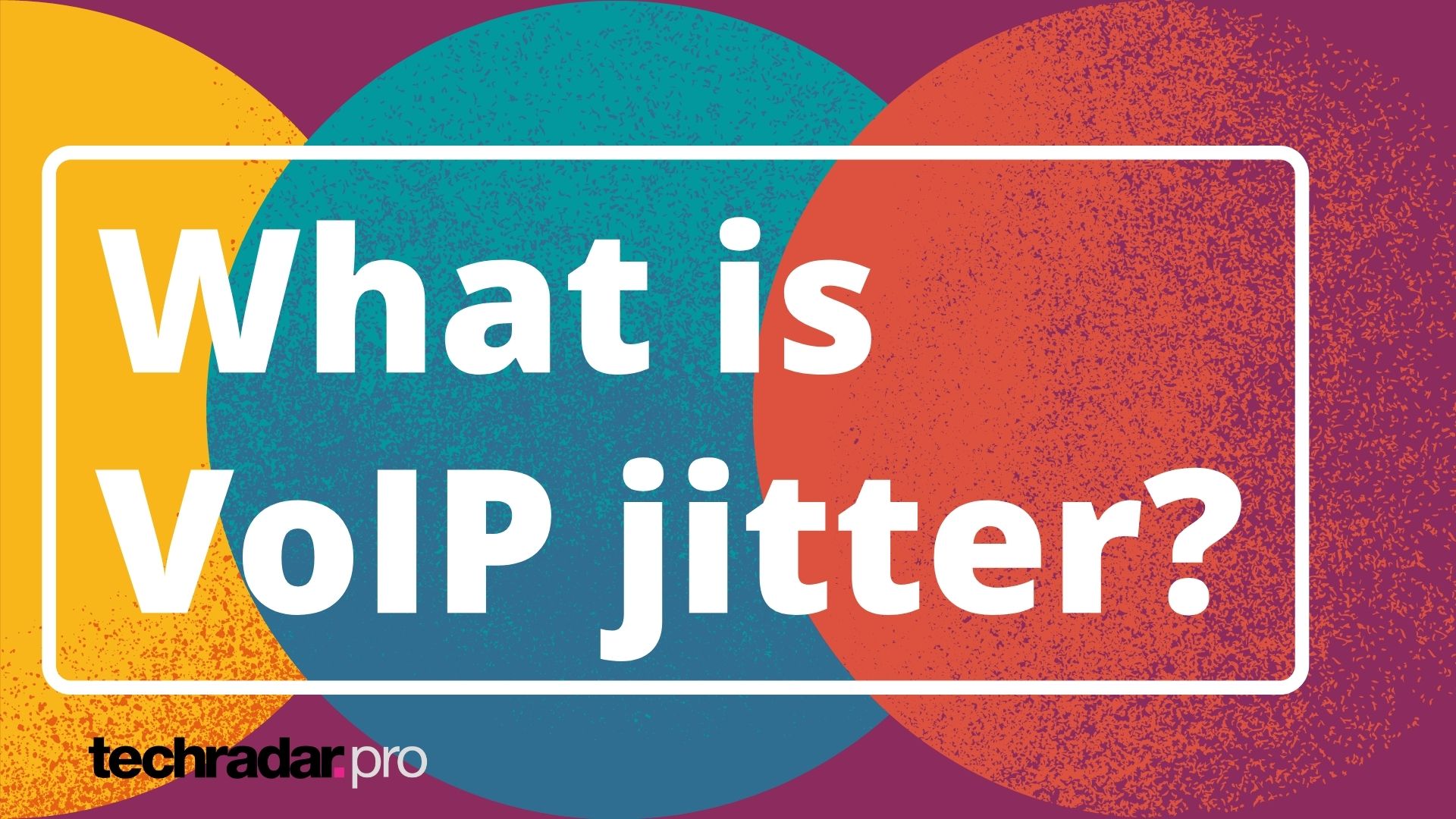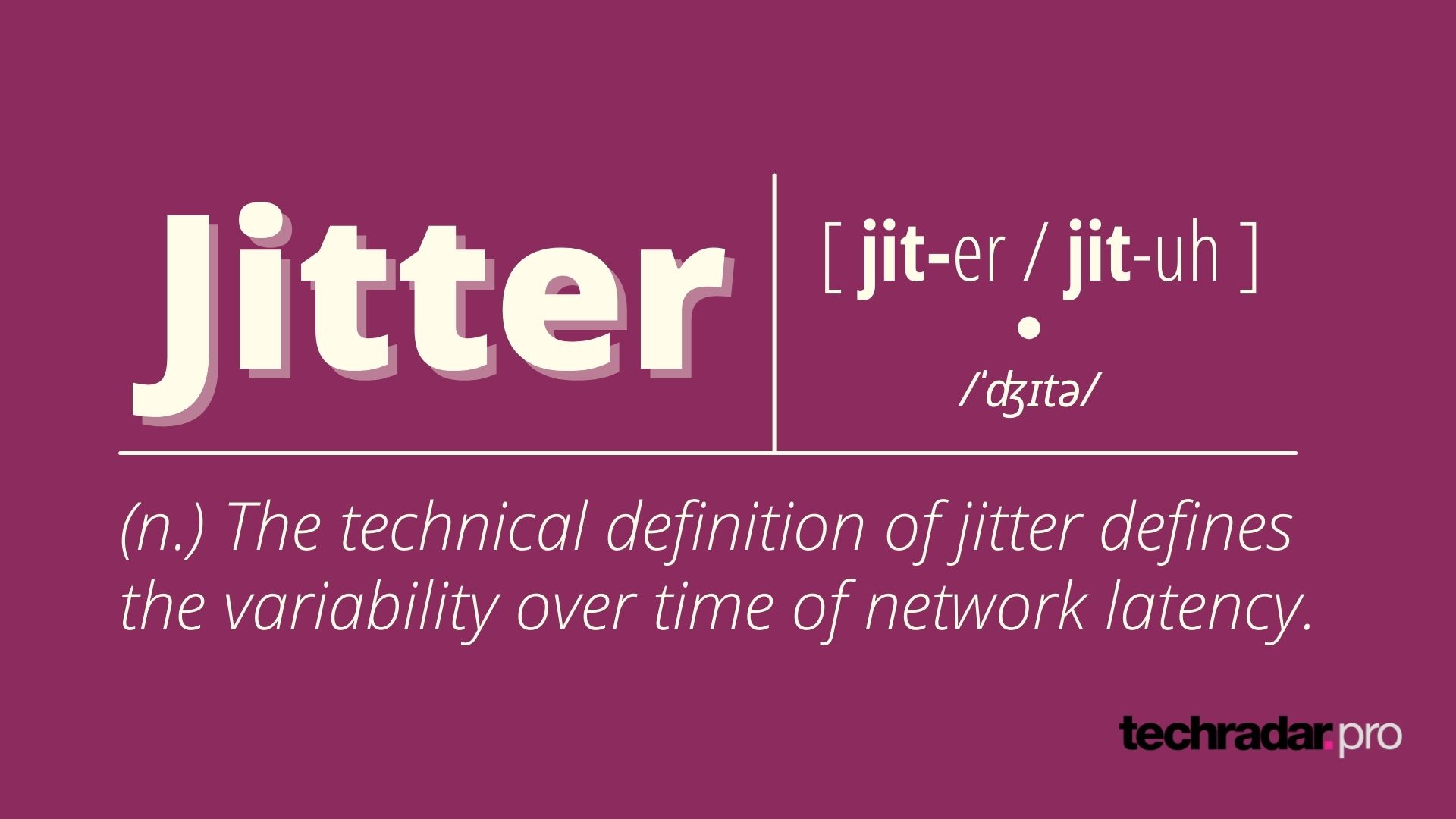What is VoIP jitter in VoIP phone systems? |Network jitter explained
VoIP jitter, commonly known as network jitter, is a concern for businesses of all sizes. Read on to find out what causes it and how to fix or prevent VoIP jitter.

What is VoIP jitter?
VoIP jitter, usually referred to as network jitter, is the time delay experienced by VoIP phone users between signal transmission and signal reception over a data network. During VoIP voice and video calls the audible and video performative effects of network jitter are usually seen as a loss of connection, glitches or 'lag'.

Do you recognize this situation?
“You’re currently number 23 in the queue.”
That’s my starting position as I begin the familiar, on-hold phone game with my gas supplier. Four and a half minutes in and waiting patiently.
It’s not my position in the queue (down to position 17 now) that irritates me so much as the increasingly poor quality of the not-so-delightful hold music wailing in my ear. It’s choppy too, cutting in and out incessantly.
Do I really need to speak to them today? Last time I was on hold for almost 48 whole minutes. I'd groan if I wasn't concentrating so hard on waiting to hear this sorrowful hold music stop.
Oh, I could always call back. I won't though. I'm definitely not going through all of this again. Almost eight minutes now and my brain is starting to feel like a cheese grater.

I can barely make out the audio, but it sounds like I’m now number 9 in the queue, progress! But of course, the longer I wait to speak to someone, the more dire the call quality becomes. Typical. Wait. Why does the hold music now resemble a toddler let loose in a Yamaha Music shop?
Are you a pro? Subscribe to our newsletter
Sign up to the TechRadar Pro newsletter to get all the top news, opinion, features and guidance your business needs to succeed!
“You’re currently number 7 in the queue. We're sorry, all of our customer service agents are busy at this time. Please continue to hold. ”
Honestly, if they’re going to make me sit and wait for this long, they could at least check the hold music and queue updates actually work… I can feel the blood pressure rising before I’ve even spoken with the poor customer service agent!
Why is network jitter important?
The scenario described above is precisely why combating VoIP network jitter is important. Being placed in virtual customer service queues with distorted hold music is enough to make anyone grouchy and grumpy.
In this article, we look at how you can minimise customer irritation caused by network jitter on VoIP phones. Understanding VoIP jitter can help you increase customer satisfaction, minimise customer wait times and ultimately offer better customer service for increased sales.
What we’re dealing with here is quite simple – Voice Over Internet Protocol (VoIP) jitter, often called network jitter.
VoIP or network jitter is congestion generated by millions of internet connections that are all active simultaneously, and which effectively start to clog up the ‘routes’ they’re taking to get to their individual destinations.
The technical definition of VoIP jitter is the variability over time of network latency.
Latency, in turn, is defined as the time it takes for one packet of data to pass along its route. Learn more about VoIP Quality of Service, how data packets work and what packet loss is.
It’s important to know about and understand VoIP jitter because it ultimately has an impact on how your business operates. It can be the difference between retaining a customer and losing them.

Jitter is a common occurrence that affects online activities that depend on two-way, real-time communication. Examples include customer service lines, conference calls, IP security cameras, and more. Jitter problems can affect any network connection, but end users experience it most often on wi-fi.

If your VoIP system connectivity is poor and your customer is being put on hold with crackly music and unintelligible muffled message updates, they’ll quickly hang up and start looking for alternatives, and alternatives often mean going with a competitor!
Thinking back to our data packets that transfer information along these communication lines, when packets arrive at different intervals, fluctuations result and voice packets end up being dropped.
As VoIP converts sound into data packets, every packet matters. So packet delays can result in gaps in conversation or drops in sound quality.
From an end user perspective, VoIP is particularly prone to jitter problems as people can perceive delays above 500 milliseconds (more on that below).
Depending on the level of jitter, the sound can therefore be choppy or even incomprehensible – that cheese grater effect!
What is VoIP latency what does it have to do with network latency?
We mentioned earlier that the technical definition of VoIP jitter is the variability over time of network latency and that latency is defined as the time it takes for one packet of data to pass along its route. If you’ve ever tried watching a video over the internet that kept getting interrupted, then you’ll be familiar with this type of latency.

When it comes to VoIP specifically, latency generally occurs in two ways:
1) The delay between a person speaking, and then the recipient on the other end of the phone hearing those words.
2) The time it takes for the VoIP solution to actually process and convert the voice information into data packets.

It’s easy to see how this directly impacts the quality of the call, leading to those long pauses we all know and love and, of course, speakers interrupting or talking over each other. Latency is usually impacted by a number of different factors. These include:
Network hardware – some routers can only transmit data at limited rates.
Wireless interference – this is down to the distance between devices and the lack of stability that comes with a wired connection.
Network software and set-up – firewalls that are incorrectly set up, or quality of service settings that aren’t configured correctly, can delay the transmission of data.
Location – this is the most common cause of latency. The further away, the longer it will take to transmit that data.
Congestion – think of your network as a road and latency as the congestion caused by extra traffic. The more data that’s being transmitted, the slower it goes.
Luckily, measuring latency is pretty easy to do – it’s calculated using what’s called a ping test. A ping test is really simple. You carry out a basic data transfer test (a ‘ping’) and measure the time it takes for your network to send and receive this data packet. You’ll then be able to work out your latency using the below equation:
Latency = ping send time + ping receipt time in milliseconds (ms).
What are the different types of VoIP jitter?

The ultimate goal is to eliminate any form of VoIP jitter – there’s no such thing as good or bad, high or low, as it all contributes to poor communication quality and negative business outcomes. However, there are acceptable levels of jitter depending on the situation. For interactive video streaming, Skype calls and the like, jitter tolerance is low.
According to Cisco, jitter tolerance, packet loss and network latency should be as follows:
- Jitter should be below 30 ms.
- Packet loss should be no more than 1%. (Learn more here on how to measure packet loss).
- Network latency should not go over 300 ms (for the full ping send and receipt time).
However, if you’re streaming a Netflix video, i.e., the communication is uni- or one directional, then a higher jitter tolerance can be exploited. As a business relying on VoIP for business-critical customer service activities, the lower jitter tolerance level is a good best practice to follow.
VoIP jitter, ping delays and network stuttering: understanding VoIP terminology
There are a plethora of different words and phrases used to describe VoIP jitter. Very often, however, they all describe the same thing. This goes for ‘network stuttering’, ‘bandwidth issues’, ‘network connectivity problems’, ‘ping delays’ and even simply ‘pings’.
On the face of it, this might seem irrelevant, especially if you’re used to dealing internally with other network and IT-savvy people.
Understanding the different terms used to describe network jitter as a professional means you can identify and diagnose network problems in a flash, and troubleshoot them faster.
However, if you’re dealing on a daily basis with other company departments and even customers, then you’ll want to familiarize yourself with all the different variations and even come up with a common ‘dictionary’ that your company uses.
It may appear trivial, but a huge amount of time can be saved if you’re all talking the same language and can therefore identify, diagnose and fix problems more quickly.
How to fix VoIP jitter

Use a jitter buffer
A jitter buffer is a device installed on a VoIP system to counter delay and latency.
The way they work is to delay incoming voice packets and store them for a short period of time. They can be configured to buffer traffic for 30 to 200 milliseconds, before the traffic is then sent on to the end user. This process ensures the data packets arrive in order and with minimal delay.
It’s worth noting that using a jitter buffer won’t fix everything. While jitter buffering improves VoIP call quality, it also increases the overall network delay. This is because the jitter buffer holds traffic for up to 200 milliseconds, adding latency to the service.
In effect, they don’t address the root cause of the issue, only the symptoms. For more on how to prevent jitter in the first place, scroll down to the next section on how to prevent VoIP jitter.
Prioritize packets
Packet prioritization refers to a VoIP Quality of Service (QoS) setting that gives certain traffic types priority over others.
The traffic you decide to prioritize will depend on which service you want to maintain or enhance the quality of. Typically, packet prioritization is only used when the service you’re trying to uphold demands constant high performance and is of critical importance to your organization.
If you choose to support VoIP calls, then you’ll need to make sure any packets containing VoIP data are given priority over other traffic types.
How to prevent VoIP jitter
Of course, the best way to stay on top of issues with VoIP jitter is to avoid it in the first place. Thankfully, there are a number of preventative measures that can be taken to do this, so you can avoid headaches later on down the line with irate employees and unhappy customers.

Test your connection’s quality
This may sound simple but poor internet connection may be the biggest cause of your jitter issues. Some VoIP providers already offer speed tests.
They are designed to show you the level of quality you’d expect to see when making calls through their platform. You can get in touch with your provider to see if they offer these tests and how they can help improve connection quality.

Use an Ethernet cable
Ethernet cables are an uncommon sight these days but they’re actually a great resource if you’re not reliant on constant mobile working and are at a fixed desk for periods of time.
Ethernet cables generally provide a much more powerful connection that wi-fi ones so you’re less likely to experience jitter.

Check your hardware
Even the most basic of networks now consists of a good number of hardware components. Think of your company set-up – it’s probably made up of physical firewalls, digital converters, physical network cables, modems, switches, wi-fi components… and that’s just for starters!
If any of this equipment is outdated, or worse, damaged, then it’s probably going to give you jitter problems. So it’s really important you ensure hardware is in top shape and as modern as possible.
Configure Quality of Service (QoS) and other settings
QoS settings are typically included in routers – they’re what you use to prioritize data packets.
But beware with data packet prioritization: on the one hand you are improving your VoIP services, on the other hand other traffic may suffer, so settings should be configured based on the specific needs of your business.
You should explore the other QoS settings available through your router to optimize your VoIP service.

Don’t scrimp on a good router
Routers are so important that they deserve their own mention. A router is effectively the brain of your internal network, connecting together the other components to create a complete circuit.
They provide both wired and wireless connections, and can create a massive bottle neck if they aren’t up to the job. Good routers also have those QoS settings we’ve talked about and that you’ll want to take advantage of depending on your business.
Use a VoIP monitoring tool
Finally, there are VoIP monitoring tools designed to give you in-depth insights into critical call and QoS metrics.
This one from solarwinds has a range of highly advanced features, including VoIP call quality troubleshooting, real-time WAN monitoring and visual VoIP call path tracing.
In other words, they go beyond simple ping tests to offer a fully comprehensive solution. They can even let you generate simulated VoIP traffic so you can monitor network quality during periods of downtime when calls are less active.
Final thoughts
VoIP is fast becoming a business-critical system for organizations of all sizes. Events of the past year or so have accelerated the move to VoIP for a number of reasons and have meant that even the smallest of businesses now rely on it to maintain their day-to-day operations.

We've listed the best VoIP services and best VoIP headsets available for businesses to help give you a head start in your search.
Why not also take a look at our popular RingCentral VoIP services review or Nextiva vs RingCentral VoIP comparison? Or, if you're just starting out with VoIP learn the difference between VoIP and PBX.
But as with any high-performance system, it does need a degree of maintenance and upkeep to ensure it supports business teams in the right way and to guarantee that customers receive an optimal customer experience.
We’ve all been there ourselves on the other end of the phone when jitter is occurring. Thankfully, jitter is easily fixed and even prevented.
Cutting corners when it comes to your foundational VoIP and internet infrastructure is not recommended; taking the proper measures to prevent jitter and minimize latency to ensure your VoIP runs smoothly is a much better route.
Emma is an experienced technology writer covering everything from Point of Sale (POS) systems to Voice over Internet Protocol (VoIP) business phone systems. As well as Techradar, she has written for IT Builder, Soldo, and CArd Payment Guru.